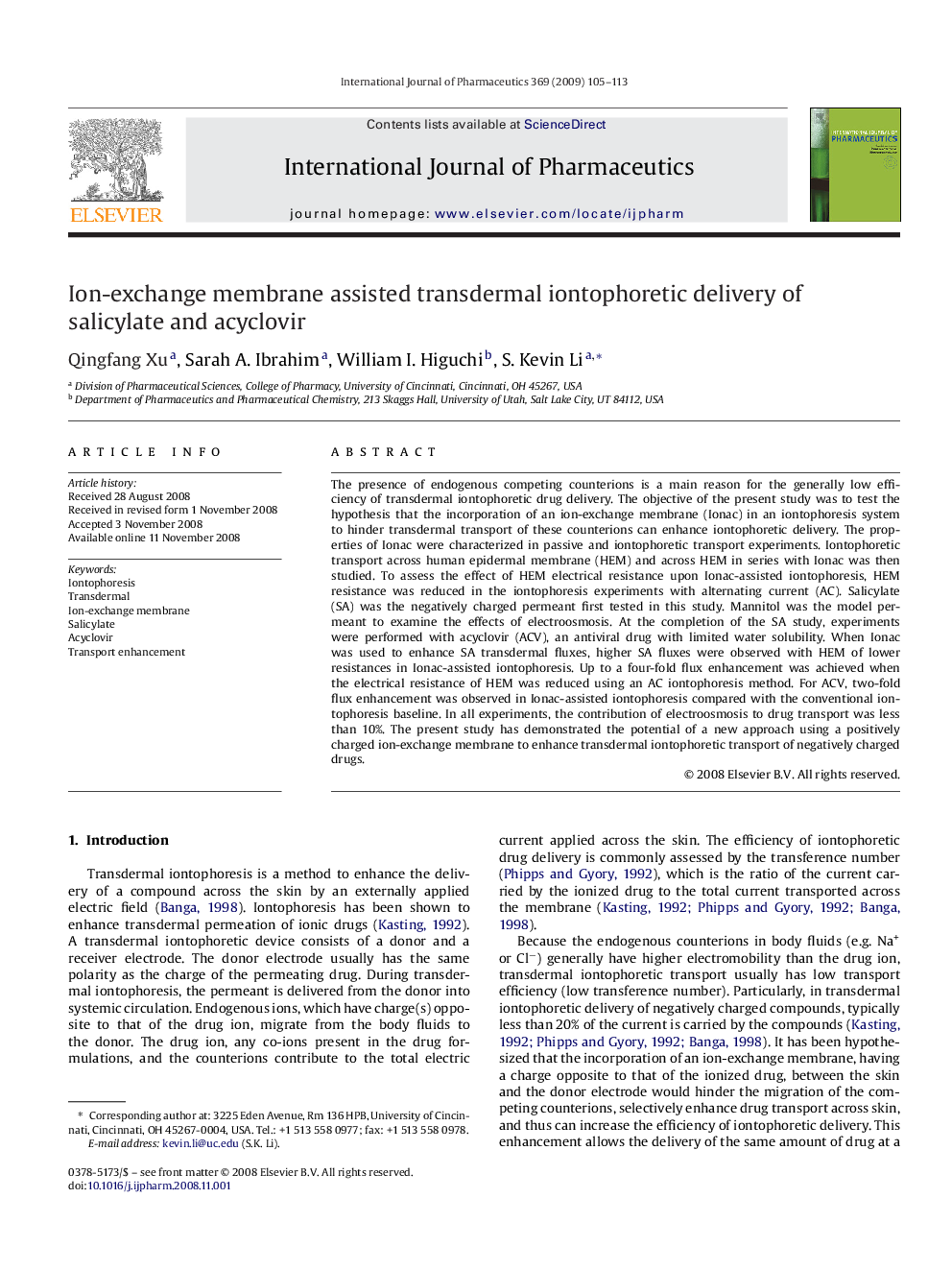| Article ID | Journal | Published Year | Pages | File Type |
|---|---|---|---|---|
| 2505072 | International Journal of Pharmaceutics | 2009 | 9 Pages |
The presence of endogenous competing counterions is a main reason for the generally low efficiency of transdermal iontophoretic drug delivery. The objective of the present study was to test the hypothesis that the incorporation of an ion-exchange membrane (Ionac) in an iontophoresis system to hinder transdermal transport of these counterions can enhance iontophoretic delivery. The properties of Ionac were characterized in passive and iontophoretic transport experiments. Iontophoretic transport across human epidermal membrane (HEM) and across HEM in series with Ionac was then studied. To assess the effect of HEM electrical resistance upon Ionac-assisted iontophoresis, HEM resistance was reduced in the iontophoresis experiments with alternating current (AC). Salicylate (SA) was the negatively charged permeant first tested in this study. Mannitol was the model permeant to examine the effects of electroosmosis. At the completion of the SA study, experiments were performed with acyclovir (ACV), an antiviral drug with limited water solubility. When Ionac was used to enhance SA transdermal fluxes, higher SA fluxes were observed with HEM of lower resistances in Ionac-assisted iontophoresis. Up to a four-fold flux enhancement was achieved when the electrical resistance of HEM was reduced using an AC iontophoresis method. For ACV, two-fold flux enhancement was observed in Ionac-assisted iontophoresis compared with the conventional iontophoresis baseline. In all experiments, the contribution of electroosmosis to drug transport was less than 10%. The present study has demonstrated the potential of a new approach using a positively charged ion-exchange membrane to enhance transdermal iontophoretic transport of negatively charged drugs.
